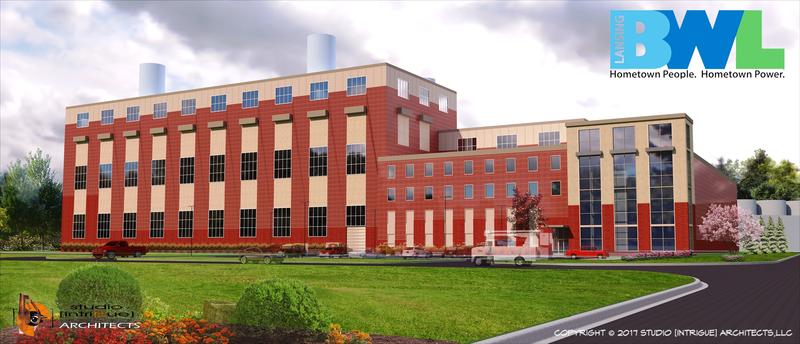Frederick Douglass
*****
I signed into a webinar this week hosted by the Michigan
Department of Environmental Quality. The webinar was presented by Jessica Gehl on “Sustainable Development Goals(SDG’s) – How
Will They Impact Your Business?”
The bulk of the webinar was based on some extensive survey work done by PwC with responses from 986 businesses from 90 countries and more than 2,000 citizen responses from 37 countries. Business, not surprisingly, sees Goal #8- Decent Work and Economic Growth as most important goal of the 17 SDG’s. They also see opportunities with Goals #9 -Industry Innovation and Infrastructure, Goal # 7- Affordable and Clean Energy, Goal #12 -Responsible Consumption and Production, and Goal #13- Climate Action. While this is heartening on the face of it, when you compare it to the citizen responses there appears little shared vision.
The bulk of the webinar was based on some extensive survey work done by PwC with responses from 986 businesses from 90 countries and more than 2,000 citizen responses from 37 countries. Business, not surprisingly, sees Goal #8- Decent Work and Economic Growth as most important goal of the 17 SDG’s. They also see opportunities with Goals #9 -Industry Innovation and Infrastructure, Goal # 7- Affordable and Clean Energy, Goal #12 -Responsible Consumption and Production, and Goal #13- Climate Action. While this is heartening on the face of it, when you compare it to the citizen responses there appears little shared vision.
Citizens see it a bit differently. Goal #2, -Zero Hunger was highest priority followed by Goal #13- Climate Action, Goal #4- Quality Education, Goal #1 - No Poverty, and Goal #6 -Clean Water and Sanitation. Admittedly all goals are important and no country has met them all yet. An interesting attempt to visualize this was produced at the University of Leeds.
The following morning I was reading further in Michael
Walzer’s most recent book A
Foreign Policy for the Left(Yale University Press, 2018) in which he
makes a key observation worth holding while looking at this disjuncture between
business and the public good that PwC has reported.

“Capitalist
corporations and their governmental servants will never by themselves address
avoidable hunger and disease, works towards the elimination of global poverty,
defend the environment, or accede to the empowerment of their workers. They
must be challenged by social movements and subjected to the political control
of a mobilized demos.” (p.43)
Ms. Gehl’s webinar in fact went on to show that Goal #1 No Poverty and Goal #2 Zero Hunger were among the least important goals reported
by businesses in the survey. That seems to confirm Walzer’s point quite
clearly. I would like to offer another consideration that both points to
confirming Walzer’s observation, but is rarely discussed.
Research done at the University of Leeds referenced
above that tries to help us visualize the challenges of meeting all the
SDG’s simultaneously, shows a striking reality we must surely confront. Given that we have only a single finite
planet to call home there are limits we are forced to face. When the
researchers at the Sustainability Research Institute at Leeds looked at seven
environmental indicators and eleven social indicators for 150 countries that closely
parallel the SDG’s they found that:
“Based on the social thresholds that we
chose, we concluded that resource use
would need to decline by a factor of two to six times for all the world’s
people to live well within planetary boundaries.”[emphasis added]
That is one heck of lot of resource reduction needed. While technology
improvements (efficiency) will surely be essential in a hurry, the size of the
necessary reductions also demands substantial behavior changes (conservation).
Technological optimists typically brush off the need for, or value of, conservation
efforts. This tendency exists despite the fact that conservation is almost
always less expensive and a quicker response to the problem.
A couple of local examples make
this point for me.
At Michigan State University where I worked for 30 years we struggled to
increase both efficiency and conservation to reduce our carbon footprint. On a
campus of 5,000 acres hundreds of buildings including many research facilities
housing and feeding 15,000 of the 50,000 students getting to neutral will be a
long haul. Yet even while investments in efficiencies and conservation measures
were heartfelt, much of the resulting gains were lost to a combination of continued
growth of the built environment and questionable exceptions to the energy
reduction plans.
Under construction currently are in excess of 130,000 additional square feet of building space to be heated, cooled, lit and powered. In recent years additions to the football stadium have added giant scoreboards and other lighting that are not on simply on the few days the football stadium hosts an event. The softball and baseball fields have added electric field heating systems to help speed up thawing of fields for Spring baseball and softball. Somehow the limits to growth seem beyond the administration's comprehension.
Under construction currently are in excess of 130,000 additional square feet of building space to be heated, cooled, lit and powered. In recent years additions to the football stadium have added giant scoreboards and other lighting that are not on simply on the few days the football stadium hosts an event. The softball and baseball fields have added electric field heating systems to help speed up thawing of fields for Spring baseball and softball. Somehow the limits to growth seem beyond the administration's comprehension.

Just across city limits, the local municipal utility, Lansing Board of Water and Light, in its effort to move away from coal has proposed a very large natural gas plant to replace the coal fired plants it wants to take down. While all agree that natural gas is more efficient in reducing carbon releases than coal, the construction and reliance on a large centralized fossil fuel plant with the threats of climate destabilization staring us in the face seems like a death wish - perhaps not for us senior citizens, but certainly those that follow.

From what I have learned, the rationale the management has accepted is
based upon:
- A lack of sense of urgency to address climate destabilization driven largely by human activity
- Low expectations from potential efficiency or conservation reductions
- Assumption of higher costs for renewable options, even as the speed of those cost downturns increases
- Low threshold stance for return-on-investment(ROI) expectation
Almost twenty years ago, economist Robert Costanza offered a very potent reflection on the quandary before us in an article “Will it be Star Trek, Ecotopia, Big Government or Mad Max” in the Futurist magazine. In this short six-page article he lays out the possible scenarios based upon a matrix looking at technological optimism vs. technological skepticism. He paints two pictures for each-- when they are right and when they are wrong.
A summary of his scenarios would not do it justice. But a read by all might help us work our way forward together by understanding whether one is an optimist or skeptic on technology our judgments should consider the possible ramifications Costanza hints are before us. As he notes, “We need to take a closer look at the costs of being wrong.” Such a reading and reflection is not only timely. It is urgent.
Perhaps the best explanation of this needed sense of urgency is
explained by the late Prof. of Physics Al Bartlett at the University of Colorado
to his students. This 90 second video
should be viewed and reflected on by us all.
